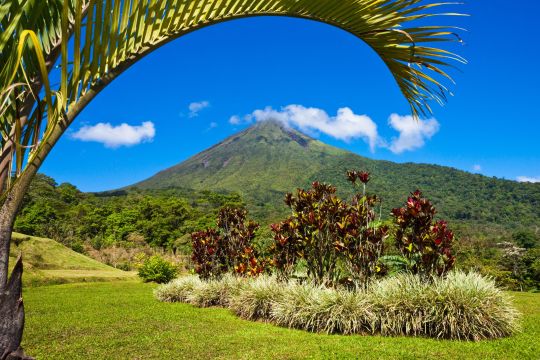|
The Arenal Volcano |
 At 5,437 feet, the Arenal Volcano looms large and ominous over the pastured green hillsides that surround its base. Although currently in a resting phase, Arenal has remained the country’s most active volcano for the past 43 years. Its storied history is charged with eruptions, both major and minor, that have intimately affected the region and the people who live here. Formed some 7,000 years ago from the adjacent (and now extinct) Chato Volcano, Arenal’s most recent eruptive period began in 1968 with an explosion that buried three small villages and left 87 people dead. Up until July 2010, the eruptions had been constant, though much less severe, and there were effusions of smoke and lava on an almost daily basis. |
 Since 2010, however, the volcano’s seismicity, explosions and lava flows have decreased significantly. It is, scientists assure us, still alive; it’s just sleeping. Arenal is what is known as a stratovolcano – a tall, symmetrical volcano that’s built upon successive layers of rock, ash and lava. Due to the convergence of oceanic and continental tectonic plates, magma (the molten or partially molten rock that forms beneath earth’s surface) rises into Arenal’s volcanic chamber and can eventually erupt from its top. |





